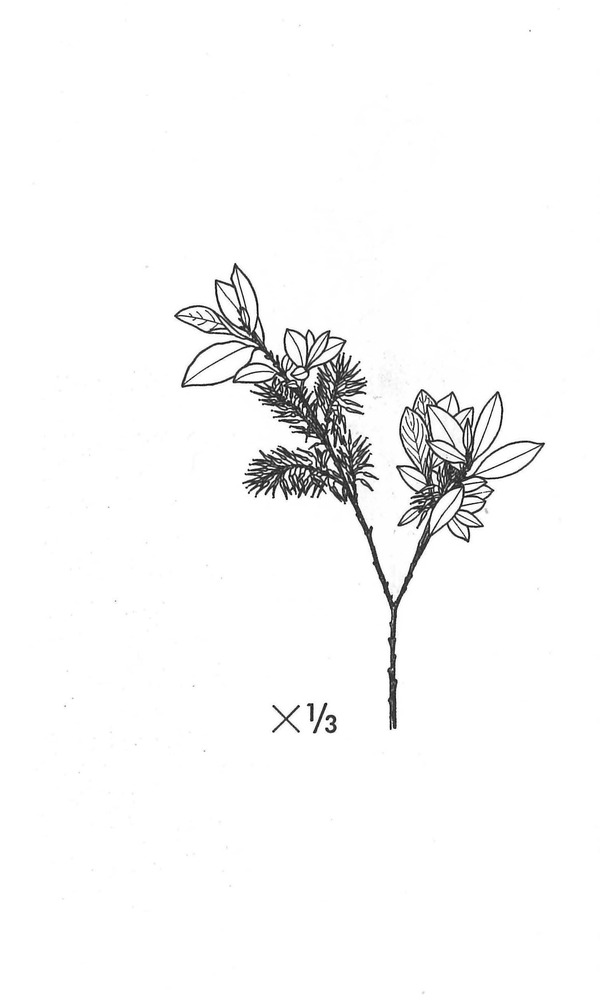| Salix depressa subsp. rostrata (Anderss.) Hiitonen | |||
| |||
| Family | Salicaceae — APG family: Salicaceae | ||
| Synonyms | Salix bebbiana Sarg., Salix rostrata Richards., Salix vagans var. rostrata Anderss., Salix perrostrata Rydb. | ||
| Common name | long-beaked willow | ||
| Description | Shrub or (rarely) small tree up to 10 meters tall; twigs grayish-pubescent when young, more or less glabrescent in age; leaves elliptical, ovate, oblong or oblanceo- late, acute, entire, or sparsely toothed, pubescent when young, glabrescent in age, dull green above, paler beneath; catkins on short, leafy peduncles, often lax and nodding; bracts yellowish-brown, narrow, somewhat pubescent; capsules slender, on pedicels 2-5 mm long, finely pubescent; stamens 2, filaments hairy at base. | ||
| Ecology | Dry places in woods, up into subalpine region. S. depressa described from the mountains of Lapland. | ||
| Taxonomy notes | Some specimens from the Yukon are nearly glabrous (var. depilis Raup). Asiatic specimens from the Anadyr and Udsk districts to the Yenisei River are considered to belong to subsp. rostrata; the rest of the Eurasiatic range belongs to other very closely related races. |
This is a digital representation of Eric Hultén’s ‘Flora of Alaska and Neighboring Territories: A Manual of the Vascular Plants’, which was published by Stanford University Press in 1968. The book was digitized by C. Webb (at UAMN) as part of the Flora of Alaska project, with funding by the US NSF (Grant 1759964 to Ickert-Bond & Webb), and with permission of Stanford University Press. Data and images © 1968 Board of Trustees of the Leland Stanford Jr. Univ. Usage licence: Creative Commons BY-NC-SA 4.0. NB: You may find OCR errors; please refer to the hard-copy if in doubt.
